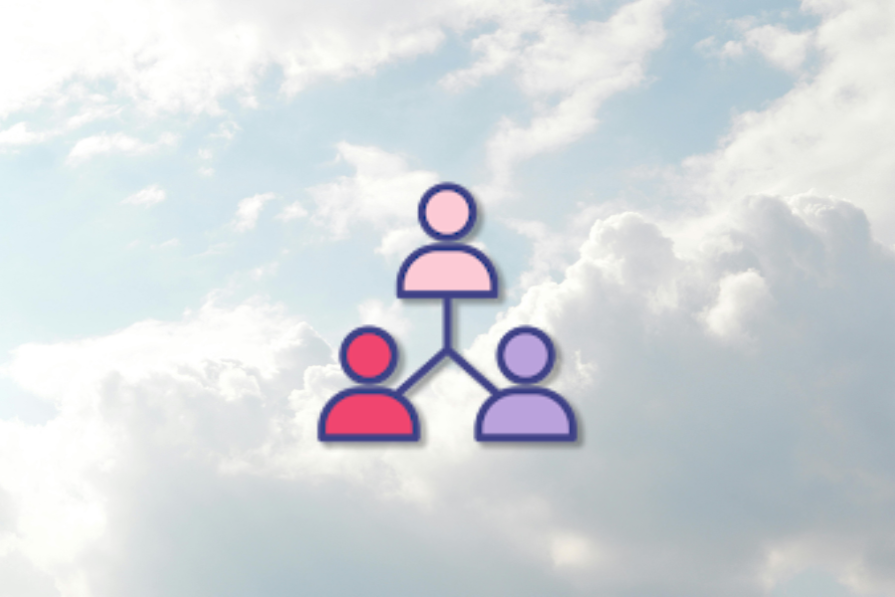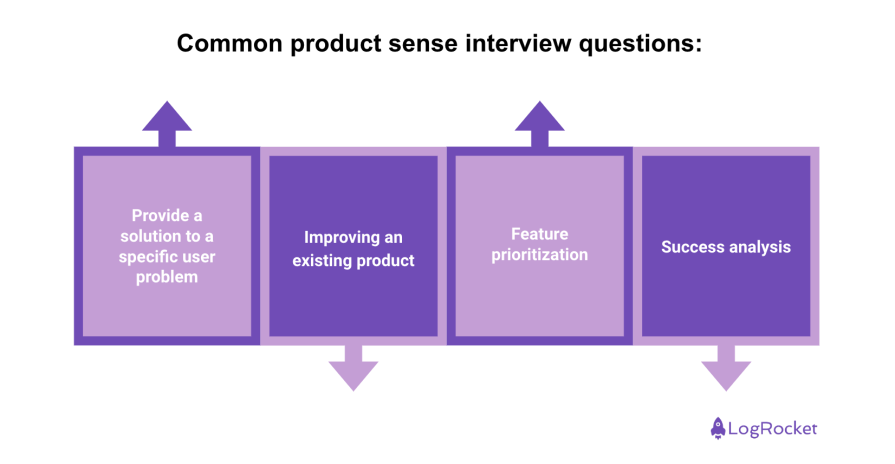Hiring a new product manager is an expensive and risky endeavor. After all, this person operates an enormous budget and their success (or lack thereof) can make or break whole products or companies. However, how can one decide if someone should be given this opportunity after only a few interviews?

Even case studies can present a false picture, as they can be conducted with help or benefit from the relaxed set of limitations, showing only how a candidate would fare in an ideal situation. However, there is one way to interview a candidate that helps them present the best skills and prove their value to a potential, future employer. Enter the product sense interview.
What is it? And how can you best prepare for one? This is the topic of today’s article.
What is a product sense interview?
A product sense interview aims to measure a candidate’s ability to understand users deeply, frame problems clearly, generate creative solutions, and prioritize effectively. It’s not just about coming up with cool features on the spot with no grounding in real live product processes. It’s about thinking holistically and ensuring every suggestion ties back to user needs and business goals. It’s also about being able to step back to address a specific problem and not just pursue a solution suggested by the interviewer.
A candidate should expect open-ended questions like “How would you improve Product X?” or “Given a user pain point, how would you design a solution?” While there’s no single “correct” answer, there are good and bad approaches. Favorable ones show structure, empathy, critical thinking, and realism.
Common product sense interview questions
Common questions you might encounter on a product sense interview include:

Provide a solution to a specific user problem
An example here would be a question like: “How would you design a product to solve X user’s challenge?” or simply a challenging product task like: “Design a car for blind people.”
These types of questions test how wide and deep the candidate will go to uncover great solutions and identify true development challenges while avoiding distracting corner cases. It’s not really about coming up with an actual feature or product, but about the process of how a particular solution shapes up. The focus is on the problem, users, visions, and goals.
Improving an existing product
This type of question is very similar to the previous one, but here one navigates through an established product and its limits. There is a unique set of challenges (e.g., customers existing expectations) with this approach.
A different, yet similar type of question is “How would you retire product Y.” Here, you don’t really focus on the solution, but on the “damage control” aspect of it all. I myself had the challenge once of retiring Gmail and it really pushed my product and technical knowledge to the edges of my abilities.
Feature prioritization
When someone asks this kind of question it’s normally a follow-up to a request to brainstorm a set of solutions/actions. Demonstrating the ability to effectively prioritize different backlog items, even in theory, goes a long way to demonstrate that a PM can see a vast array of potential challenges and prioritization vectors.
Of course, in a real line of work, a reliable priority sorting process would need input from developers and it would be great to acknowledge this. This line of questioning also requires identifying the most important metrics to consider for a specific product.
Success analysis
Here, a candidate is faced with identifying the right set of metrics that should be used to evaluate the success of a specific product update. With this, a potential future employee can demonstrate they understand what’s important for the users. In rare cases, the candidate will be asked for different product fundamentals, like coming up with a strategy or roadmap, and those will often also boil down to identifying the right metrics to pursue.
Key components of a product sense interview
A product sense interview is less about the destination (the solution you provide) and more about the journey (how you come up with the solution and justify it). The key components are:
Problem framing
You need to be able to define the problem clearly and understand why it matters. A well-framed problem will set you up to brainstorm effective solutions that will impress your interviewer. The wrong approach here is to jump head first into theory-crafting features or whole products.
Even if the other party doesn’t want to listen to this bit (and the following ones), it’s still a good idea to ask for a few minutes of time to think and go through problem framing (and other components) on your own.
User centricity
Try to identify who the user is, what their pain points are, and what value they seek. On a product sense interview it’s all about the users and serving them in the best possible way. This way, at least in theory, you can best demonstrate you’re user-centered and can craft products that focus on this group of stakeholders.
Ideation
This is just a formality to mention, but at some point, you will start to brainstorm ideas. It will be a great idea to present them along with how they address the problem at hand and fit into the company’s vision and strategy. Just don’t go overboard with creativity, as the next step will quickly show how unrealistic those sci-fi-level ideas are.
Prioritization
This is important for the high-level tech and complexity understanding at this stage. As you won’t be working with a team of devs here, it’s really all about the “finger in the wind” estimation of the value provided and the effort needed for the items you have come up with during the prioritization step. As long as you can justify in the slightest your estimations, you’re good to go.
Metrics
If you have a problem to solve, you need to be able to measure whether the solutions you “deploy” during your product sense interview are successful. Sometimes it will be straightforward (e.g., increase in page conversion), but sometimes measuring success might be hard and you’ll need to create some proxy metrics (e.g., number of “fun” features used during a Skype call to determine the number of “fun” calls.)
Limitations
Speaking of proxy metrics, you better make the best use of the time to think about an answer. Some of your solutions may come with important roadblocks (e.g., hallucination when using ChatGPT-powered features), which you need to address or at least acknowledge to demonstrate you have product sense.
Team needed
Some projects will require a typical agile scrum product team, including designers, data analysts, developers and QAs, and some will require specific talent (e.g., AI engineers).
How to prepare for a product sense interview
When it comes to product sense interviews, you want to make sure that you go into them with the right preparation. Make sure that you:’

Research the company’s product and market
If you’re equipped with knowledge about the company, its vision, mission, and how the product looks and works, it’ll be much easier to come up with meaningful ideas. If you also manage to look at the product’s competitors and “borrow” some of their ideas, then you can better present a viable way forward.
Practice frameworks
Giving structure to your answers will really help convey your talents. Consider methods like the CIRCLES method, STAR framework, SPICIER framework, or user-centered design thinking. These structures help you break down complex problems into manageable steps.
Develop storytelling skills
You might have the perfect solution in mind, but if you can’t explain it clearly and engagingly, it won’t shine. Work on communicating in a way that’s easy to follow and understand. Start with formulating short sentences and modulating your voice.
Review common questions and case studies
Regardless of whether you’re expecting an interview or awaiting the call, familiarize yourself with typical questions and walk through them aloud. The more you practice, the more natural your responses will feel. Consider answering questions in front of a camera to review the footage and look for improvement angles.
Don’t sweat it
While this might sound counterintuitive to a section called “How to prepare,” it’s important to seem relatively relaxed and fresh. Stress and nerves are your enemies and will jeopardize your interview.
Conducting an effective product sense interview
While there’s obviously much more work and preparation on the candidate’s end, the interviewer also needs to make sure the best talent has a stage to perform their best and give you the opportunity to hire the truly best candidate. To that end, consider following pieces of advice:
Design clear, open-ended questions
The more open questions you pose, the more freedom and creativity the candidate can express. Avoid overly narrow questions that require specific subject level knowledge unless it’s a “must-have” for a position.
Stay unbiased
While you may have a perfect answer in mind, remember that open-ended questions should not have a right or wrong answer. Even if the candidate has a different perspective than you, it might be valid, if not better. After all, it’s not really about the actual solution, but how the candidate justifies it.
Listen for depth
If you want to score specific aspects of the answer, the solution should be just a relatively small part of it. Other than that, check if the candidate correctly identified the problem, metrics, provided a sensible set of solutions, and prioritized them in a convincing way. Also, don’t be afraid to help the candidate a little.
Foster a relaxed, conversational atmosphere
Everybody performs better when they’re comfortable and feel encouraged to think aloud. If you see that the candidate is stressed for no good reason (e.g., he is late due to enormous, accidental traffic), try to slow down the interview, ask small talk questions, or do whatever else you can to help the candidate take a breather and perform at the candidate’s optimal level. It’s beneficial for both sides of this interview!
Book a little time for candidate’s questions
It’s a good idea to allow a candidate to ask a question or two at the end. At the same time, don’t score them on the basis of their questions.
Provide feedback
While you’re probably super busy and barely have time, remember how it feels to fail an interview and not receive any feedback about what went wrong. I challenge you to be better than this and help the candidate improve in the future by knowing what made them fail the product sense interview.
Final thoughts
Mastering a product sense interview is a critical milestone in any product manager’s journey. By embracing your user empathy, sharpening your problem-framing skills, and learning to balance creativity with practicality, you set yourself up for success. That goes for the interview as well as, hopefully, following the product manager’s offer and work.
Remember, true product sense isn’t about pure intuition or scientific analysis. It’s about putting users first, making informed decisions, and continuously refining your approach. With preparation, practice, and a willingness to learn, you can ace your product sense interviews and bring meaningful products to life.
Featured image source: IconScout
The post A guide to mastering the product sense interview appeared first on LogRocket Blog.